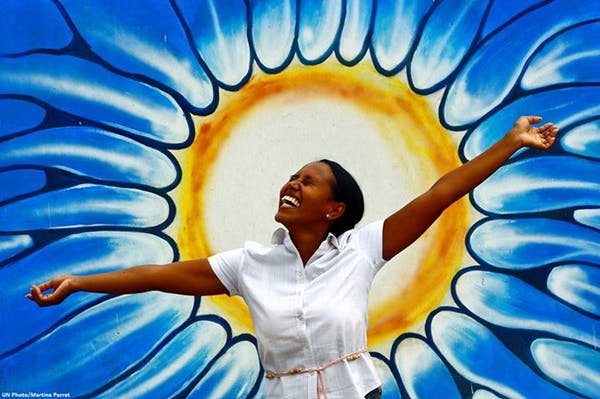As we think about the post-2015 development agenda and try to make sure that the much bandied notion of “women’s empowerment” (WE henceforth) gets its due attention, it may be time to stop and think further about what the term implies and includes. Broadly speaking WE is about gender equality in all walks of life, and in particular, about giving women the same rights of choice and control over the circumstances of their lives that men have.
One would think that this demand needs nothing more than moral and ethical justification. And yet, we feel obliged to always tout the instrumental benefits of WE – to demonstrate that empowered women are good for the economy, or for social stability, or (this last is particularly popular as the post-2015 agenda firms up) for sustainable development.
But by valorizing empowerment only because it makes women better able to hold up the sky, we do them a disservice. It leaves out a crucial component of the good life that all individuals have a claim to – the ability to do things that they enjoy, simply because they enjoy them, regardless of the material worth of these activities. Free time, leisure time, time to laze, time to paint, time to read, time to gaze – these are not goals that national accounting statistics think worthy of measuring or achieving, but in fact, as we use the resources of the Millennium Development Goals (and now post-MDGs) project to make women equal to men in economic and political opportunity and reward, we run the risk of unwittingly increasing even further the large gender disparities in leisure that exist worldwide and especially in the poor countries.
A series of what are called “time-use” studies demonstrate that women, whether or not they work outside the home, have had and continue to have much less time for leisure than men. Perhaps that partly explains the relative absence of women artists, artistes, and philosophers through time. Perhaps it explains even more the relative absence of such creative women who are also wives and mothers – it appears that for women, unlike for men, the expression of creativity often precludes a simultaneous domestic and/or work life.
In any case, even uncreative and unproductive free time is a necessary ingredient of the fulfilled life. Moreover, time-use studies that demonstrate gender differences in the number of hours of free time still miss out on other important gender dimensions of leisure. For example, women’s leisure is much more likely than men’s to be social rather than solitary (going to a temple as opposed to reading a book), passive rather than active (watching television as opposed to playing scrabble) and family centered rather than extra-domestic (seeing a film with relatives rather than having tea with friends). Women’s leisure is also more likely than men’s to be fragmented (that is, engaged in small units of time rather than the block of continuous time that complete absorption in a enjoyable or creative activity demands) or secondary rather than primary (that is, usually combined with some other, non-leisure, activity: listening to the radio while cooking for example) – again not conducive to deep absorption.
Many of these differences have to do with social norms and social disapproval – there are so many written and unwritten rules about how women dress or walk or talk (or even laugh, as the recent example from Turkey shows!) and about who is responsible for what unpaid activities in the home; changing these is a longer term project that the post-2015 agenda can indirectly push through things like gender-sensitive education and incentives. Incidentally, it is instructive that when men do take on some of women’s duties, they seems to grab the best ones first. For example, studies find that the most common household task that men volunteer for is the one of shopping for daily needs, not child care.
But there is also a role for more immediate and pragmatic policies to increase women’s access to leisure. Among these, special mention may be made of investments in more safe public spaces for women (physical insecurity is a huge dampener of the urge to go out and have some harmless fun) and investments in more affordable domestic labor saving technology: In field work in rural India and Bangladesh I was struck by how often women mentioned the lowly pressure-cooker – that reduces kitchen time – as one of the most marvelous inventions of the modern age!



 View All Blog Posts
View All Blog Posts